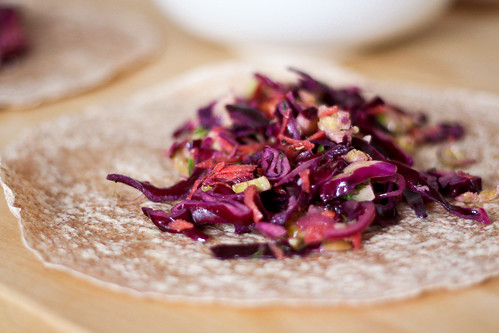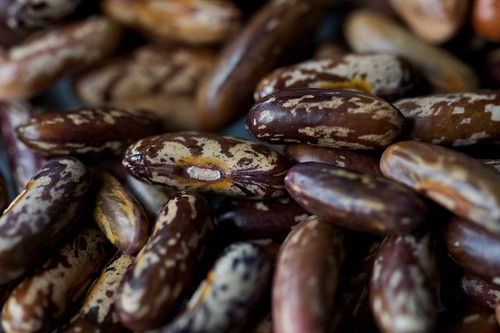recipe: Marion's sticky buns
Marion Cunningham is the goddess of breakfast.
Last week I had a hankering for cinnamon rolls, so I decided to make them for Sunday, when I had to drop off brunch at a friend's house. I scavenged through my books and the world wide web for a trusty recipe--one that wouldn't be too dense or dry. I hate it when you spend two days on yeasted breakfast goodies only to pull them out of the oven and have them be bready. Ugh.
I narrowed my choices down to
and
, but at the last minute, I remembered my trusty
, the one that has never done me wrong, and I switched gears and committed to Marion.
It was the right choice. The dough was light and buttery, and there was no shortage of gooeiness. In fact, the rolls might have been a little too gooey, if that's possible. Next time, with a few little changes, like toasting the pecans first, maybe using some white sugar and burning the caramel a bit, and perhaps even adding a pinch of cinnamon (which Marion outlaws) these could become the dreamiest things ever to grace my breakfast table.
Caramel-Pecan Sticky Buns
adapted from Marion Cunningham's
makes two dozen buns
for the dough
1/2 cup warm water
4 1/2 teaspoons active yeast (2 packages)
2 cups milk, warmed
1 stick (4 oz.) butter, room temperature
6 tablespoons sugar
2 teaspoons salt
2 eggs, room temperature
6 cups flour, more or less
for the caramel glaze
2 sticks (8 oz.) butter
3 cups brown sugar
1/2 cup light corn syrup
3 cups broken pecan or walnut pieces
a heck of a lot of salt
if you want, some cinnamon
Put the water in a small bowl and sprinkle the yeast over. Stir and let stand for 5 minutes to dissolve.
Put the warm milk, room temperature butter, sugar, salt, and eggs in a large mixing bowl and beat until well blended. Add the yeast and 4 cups flour. Mix vigorously. Add only enough flour to make a soft, manageable dough. Sprinkle a board with flour and turn dough out onto it. Knead for 1 minute. Let the dough rest for 10 minutes. Resume kneading until the dough is smooth and elastic. Put the dough in a greased bowl, cover with plastic wrap, and let rise until double in bulk.
Make the caramel glaze. Put the butter, brown sugar, and corn syrup in a heavy-bottomed saucepan. Put the pan over medium heat and stir often until the butter is melted, the sugar is dissolved, and the mixture is well blended. Add generous amounts of salt (I use Maldon or sel gris) to balance out the sweetness and saltiness. If using cinnamon, add some to taste, maybe about one teaspoon. Remove from the heat and pour one cup of the glaze into a small bowl. Set aside. Spread the remaining 2 cups glaze over the bottoms of three 8-inch cake pans.
Toast the pecans or walnuts in a dry cast iron pan over medium-low heat, constantly stirring, or in a 350°F oven, until they are lightly golden, then sprinkle 1 cup of nuts over the glaze in each of the pans.
Punch the dough down and divide into thirds; while you work with one part, cover the remaining pieces of dough. Roll the first third of dough into a rectangle about 8 by 12 inches. Spread 1/3 cup of the caramel glaze that has been set aside over the rectangle. Loosely roll the rectangle from the wide side, making a long tube. Cut into eight pieces, eace 1 1/2 inches thick. Place the rounds, flat side down, in one of the cake pans. Repeat with each remaining third of the dough. Cover the pans loosely with plastic wrap, and if you want, at this point you can refrigerate overnight (heck, you could probably freeze some at this point, too). Let the shaped dough rise for about 35 to 45 minutes, or until the dough looks a little puffy. If pulling out of the fridge or freezer, naturally, this will take longer to achieve.
Preheat the oven to 375°F. Bake for 35 to 45 minutes, or until a skewer comes out clean when inserted into the center bun--there should be no dough clinging to the skewer. Run a knife along the edge of the pans and invert onto a plate, or onto racks with waxed paper underneath to catch the dripping glaze.
Serve warm.
this last shot is by dave levin























